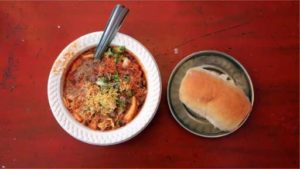
 By Holiday Times Traveler
By Holiday Times Traveler
The food culture of western India, essentially Gujarat, Maharashtra and Goa, was initially developed by tribes (predominantly fishermen and brahmins). As the region progressed, the food culture drew influences from the merchant and trading communities, who lived here. An excellent example of this has been Parsi delicacies like dhansaak (meat curry with lentils and vegetables), altee paletee (a dish made with eggs and keema, usually had for breakfast) and akhuni, which were inspired from traditional Gujrati, Kokani and colonial cuisines. Even today, the food culture in this region has three distinct layers – the vibrant Kokani food that was developed by early dwellers; the Maharashtrian cuisine that was developed by the brahmins and sahukars and defined under the Maratha rule; the Parsi Anglo-Indian food that came during the colonial times.
The fare in Gujarat is predominantly vegetarian, with a hint of sweetness intermingled with dal (lentils), kadhi (gravy-based dish of chickpea flour) and sabzi (dish made from a combination of cooked vegetables), which are commonly found there. A generous use of brown sugar is preferred in most dishes and staples include khichdi (dish of rice and lentils), chaas (buttermilk) and homemade pickles.
Meanwhile, food in Goa in inspired from its Portuguese colonialism and Hindu origins. Being on a coastal location, food is heavily dependent on the sea, with rice and fish being the most common meal. Some of the delicacies worth trying here include kingfish, pomfret, tuna and mackerel. The Hindu cuisine of the area is very light on spices and uses little to no onion and garlic in its recipes. However, one can find a liberal use of lentils, gourds, pumpkins, roots and bamboo shoots.
The topographical variety of the state of Maharashtra guarantees further diversity in its cuisine, which can be broadly classified into two parts. The coastal areas of the state call rice, fish and coconut their staple food, while the hilly terrains of the Western Ghats, have an abundance of groundnuts, jowar (sorghum) and millet.
Courtesy: Incredible India






